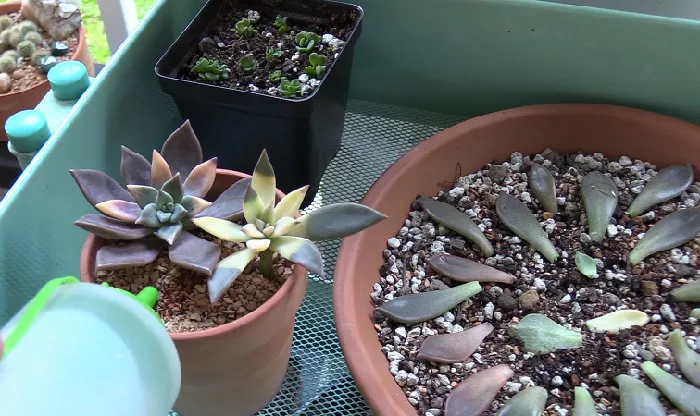Soaking succulents might seem tricky, but it’s quite simple once you understand their needs. These hardy plants store water in their leaves and stems, making them low-maintenance. However, knowing when and how long to soak them is crucial for their health. Let’s dive into the details to ensure your succulents thrive.
Understanding Succulent Water Needs
Succulents are adapted to arid environments, so they don’t need frequent watering. Overwatering can lead to root rot, which is a common cause of succulent death. Instead, they prefer infrequent but thorough watering. Soaking is a method that ensures the plant gets enough water without the risk of overwatering. It allows the soil to absorb moisture evenly, promoting healthy root growth.
When to Soak Your Succulent
Before you decide to soak your succulent, check the soil. Stick your finger about an inch into the soil. If it feels dry, it’s time to water. Another sign is when the leaves start to wrinkle or look slightly deflated. This indicates that the plant is using up its stored water and needs a drink. However, if the leaves are still plump and the soil is slightly damp, wait a few more days.
The Ideal Soaking Time
The soaking time depends on the size of the pot and the type of soil. For most succulents in small pots (up to 4 inches), soaking for about 10 to 15 minutes is sufficient. The water should be absorbed by the soil and reach the bottom of the pot. For larger pots (over 6 inches), you might need to soak for 20 to 30 minutes. The goal is to ensure the soil is thoroughly moistened but not waterlogged.
Steps to Soak Your Succulent
Soaking a succulent is a straightforward process. First, fill a sink or a shallow container with water. Place the pot in the water, ensuring the water level is about halfway up the pot. This allows the soil to absorb water from the bottom. After the soaking time is up, carefully lift the pot out of the water and let it drain for a few minutes. Excess water should run out of the drainage holes at the bottom of the pot.
Choosing the Right Soil
The type of soil you use can affect how well your succulent absorbs water. A well-draining soil mix is essential. You can buy a pre-made succulent mix or make your own by mixing equal parts of potting soil, perlite, and coarse sand. This combination ensures that water drains quickly, preventing the roots from sitting in water for too long.
The Importance of Drainage
Good drainage is crucial for succulents. Make sure your pot has drainage holes at the bottom. This allows excess water to escape, reducing the risk of root rot. If your pot doesn’t have drainage holes, consider drilling some or using a layer of gravel at the bottom to help with drainage.
Signs of Overwatering and Underwatering
It’s important to recognize the signs of improper watering. Overwatered succulents have soft, mushy leaves that may turn yellow or brown. The roots can also start to rot, giving off a foul smell. On the other hand, underwatered succulents have wrinkled, shriveled leaves. They may also drop leaves more easily. By paying attention to these signs, you can adjust your watering schedule accordingly.
Adjusting for Different Seasons
Succulents have different water needs depending on the season. In the spring and summer, they are actively growing and may need more frequent watering. Soaking every two to three weeks is usually sufficient. In the fall and winter, when they are dormant, they need less water. You might only need to soak them once a month during this time.
Special Considerations for Different Types of Succulents
Some succulents have specific watering needs. For example, Echeverias and Sedums prefer slightly more water than other types. They can handle being soaked every two weeks during the growing season. Aloe plants, on the other hand, are more drought-tolerant and only need to be soaked every three to four weeks. Always research the specific needs of your succulent species to ensure you’re providing the right care.
Using the Right Water
The quality of water you use can also affect your succulent’s health. Tap water often contains chemicals like chlorine and fluoride, which can build up in the soil over time. Using distilled water or rainwater is a better option. If you must use tap water, let it sit out for 24 hours before using it. This allows the chemicals to evaporate.
Monitoring Your Succulent’s Health
After soaking your succulent, keep an eye on its health. Check the leaves for any signs of stress or disease. If you notice any issues, address them promptly. Healthy succulents have plump, firm leaves and strong stems. They should also show new growth over time.
Creating a Watering Schedule
To make caring for your succulents easier, create a watering schedule. Mark on a calendar when you last soaked your succulent and when it’s time to soak it again. This helps you stay consistent and prevents overwatering. You can also use a moisture meter to check the soil’s moisture level if you’re unsure.
Conclusion
Soaking your succulent is a simple yet effective way to ensure it gets the right amount of water. By understanding its needs, choosing the right soil, and paying attention to signs of stress, you can keep your succulent healthy and thriving. Remember, the key is to find a balance between providing enough water and avoiding overwatering. With a little care and attention, your succulent will reward you with its beauty for years to come.


